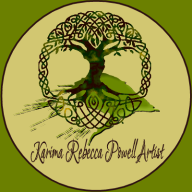More and more people are looking to what grows wild for an alternative source of teas. The need for a calmer lifestyle away from caffeine enriched drinks and medications is calling people back to the hedgerows. Foraging is re-emerging. As a young child, I remember my grandfather teaching me about the edibles in the woods, fields and lanes. He used to make his own wines and was happy to pass on his knowledge. I am now doing the same for my young grandson. At three and a half, he already knows many names of plants and trees and is aware of the spring growth appearing when we are out and about. This is so important to pass on. This knowledge passed down through generations.
I have a Korean friend who always asks when I talk about a plant…Can you make tea with that? Often the answer is yes! Let’s take a look at some of those plants, flowers, trees and leaves.
Please note that I am not a professional, this is just my personal blog with my own experiences. As with all things in the wild, care must be taken, research done, knowledge learnt and respect for the environment executed. There are plenty of sites giving detailed info on what plants, leaves, roots, and so on, are and importantly, are not suitable for human consumption. Do check them out. Here is one I found. and another. If in doubt DO NOT PICK IT. Simples.
Herbs have been used since mankind walked the earth and for me, they hold some kinda magic. The aromas are heavenly. These are the ones I grow, use and love. I have a tiny space for growing in my garden in Ireland, herbs are a must for me so they take precedence.
Rosemary. Sage. Thyme. Marjoram. Oregano. Mint. Rose lemon geranium. Fennel. Lemon balm (Melissa). Lemon Verbena.
Now there are many more but these are the ones I use either singularly or in combinations. The best mint is Moroccan mint which is a spearmint. With the geranium, only a few small leaves should be used. Here is one of my combination teas that has wonderful flavours: small amounts of each rosemary, marjoram, mint, sage, thyme, lemon verbena and geranium. Most of these images are from my garden in Morocco where things grew like weeds or from the wild ones in the mountains which were abundant.






Wild leaves can also be used and these are the easiest to forage here in Ireland: Blackberry. Raspberry. Nettles. Strawberry. Pine needles. Spruce tips.



Flowers add a delicate fragrance and flavour to teas and these are my favourites: Rose. Hibiscus (dried). Chamomile. Viola. Pineapple weed. Elderflower. The roses I use are the Damascus roses grown in the Rose Valley in Morocco. (I brought back a stash of roses and dried hibiscus last year). A delicate pink fragrant rose used in the distillation of the very valuable rose oil. A few buds with a few strands of saffron also makes a gorgeous tea.




I spent a lot of time in Morocco before the pandemic, around 7 years for most part of the year. Tea is a huge part of the culture there and while green tea with mint is the tea served to tourists and in the cities, get off the beaten track and have tea with the indigenous Amazigh people and you will find all manner of herbs being used. This is where I learnt what to combine. The flavours were so wonderful as the herbs and flowers are packed with sun giving goodness.

In the desert, the people add a small red growth from the acacia tree to make the tea really frothy. There is a ritual attached to the making of the tea which I never tire of watching, be it in someone’s home, on a mountain or in the heart of the desert far from the hubbub of daily life.



If you are interested to read more about my adventures and life in Morocco, you can read them in my blog here. I haven’t posted since the pandemic as life threw me a curve ball and I moved back to Ireland, but there is plenty of reading there! As always…comments below! thanks.


Leave a comment